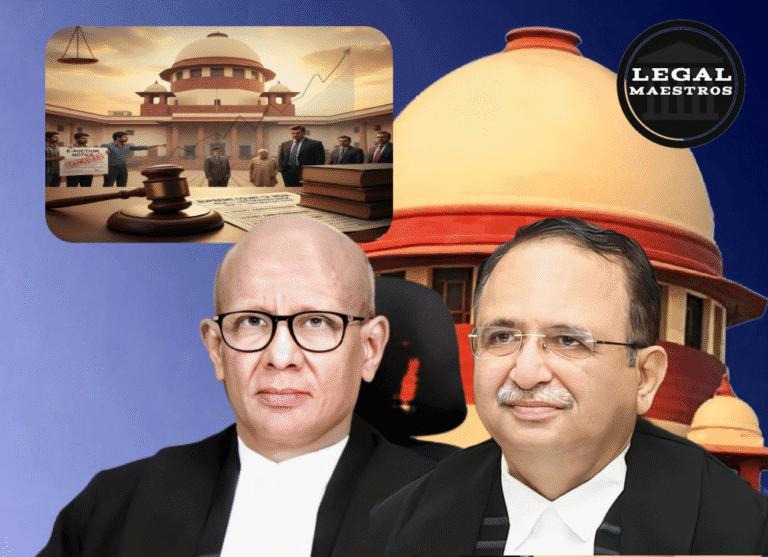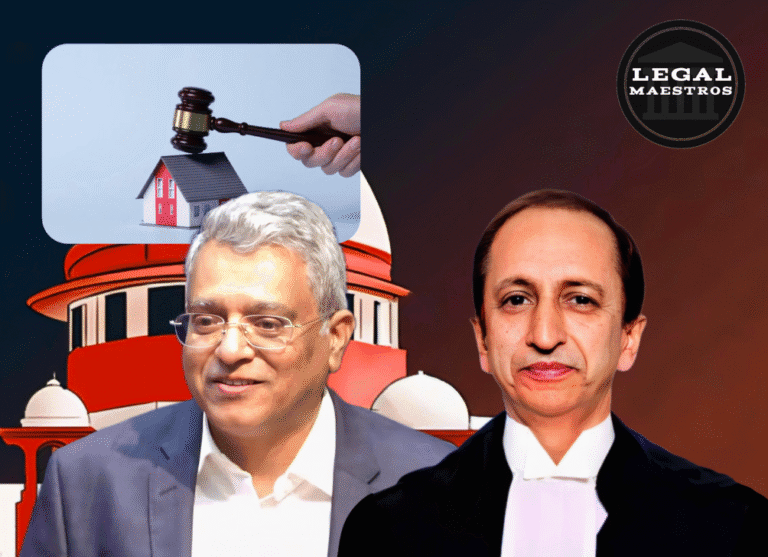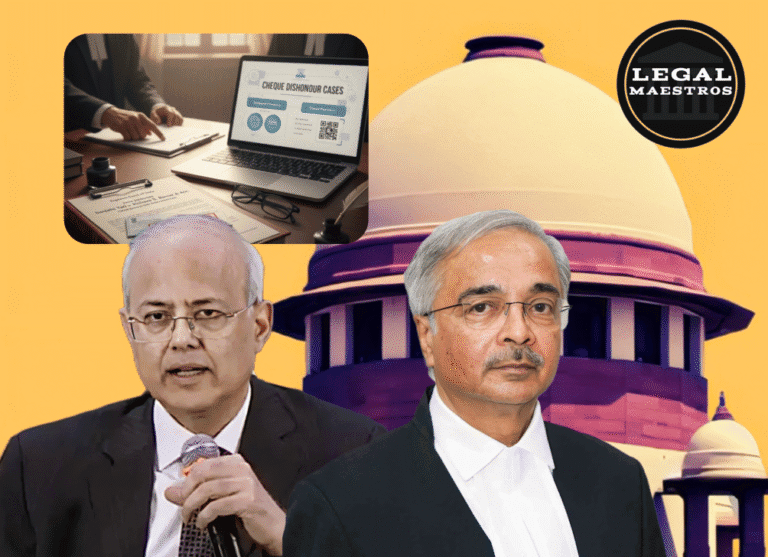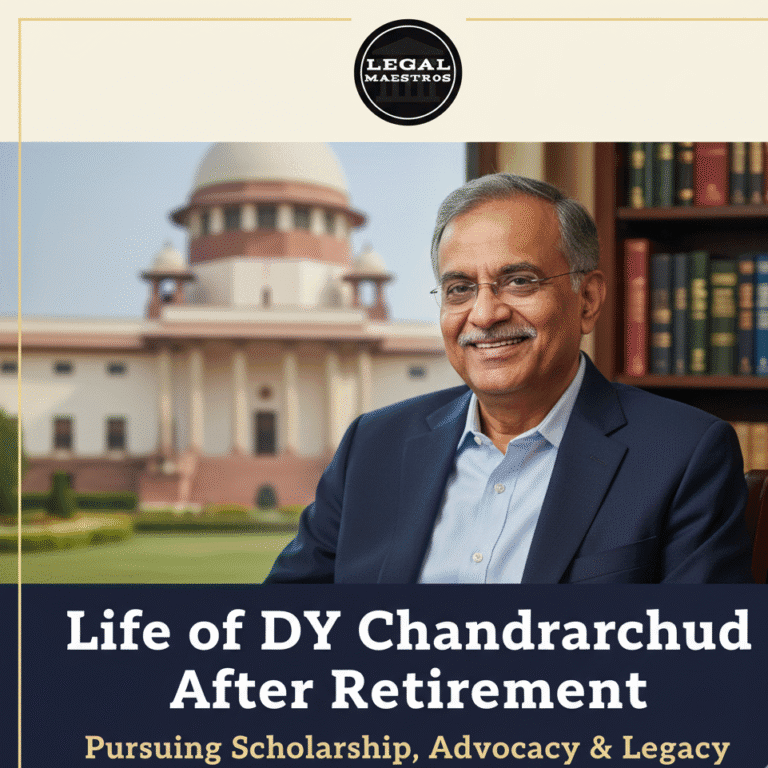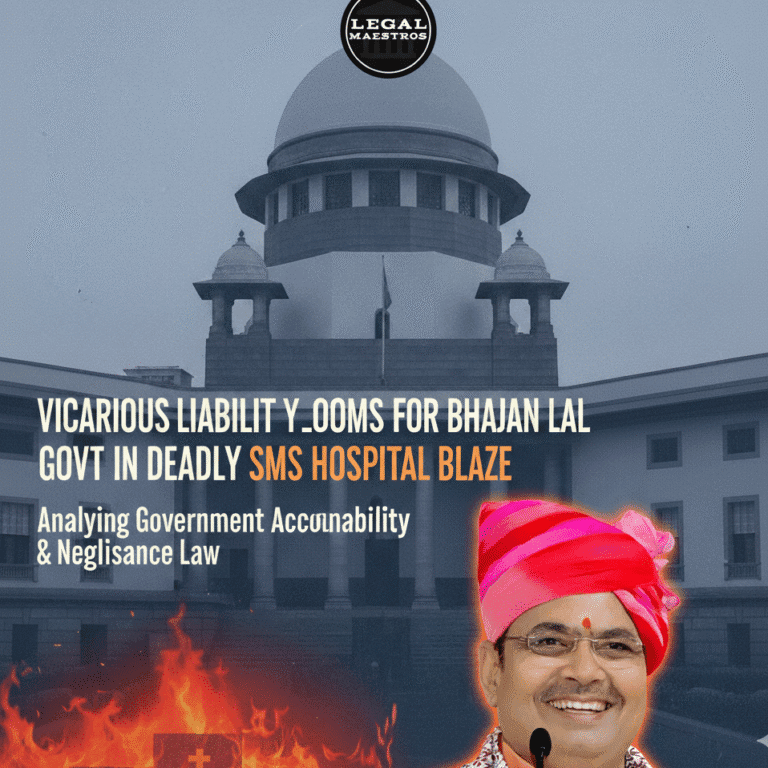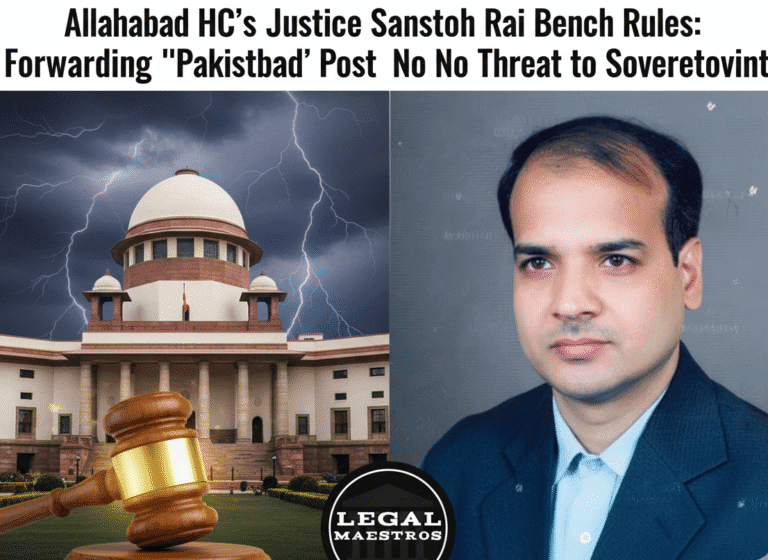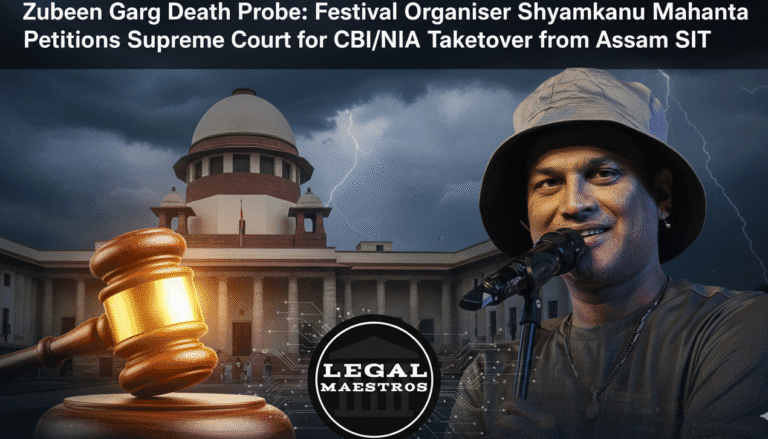
Justice Nongmeikapam Kotiswar Singh Leads Supreme Court Verdict Upholding Chetan’s Conviction in Shocking Sugarcane Field Killing
Introduction
The ruling that was handed down by Justice Nongmeikapam Kotiswar Singh on May 30, 2025, in the case of Criminal Appeal No. 1568 of 2013, reinforces the stringent standards that are necessary in cases that are established only on the basis of circumstantial evidence.
When confronted with claims of a severe miscarriage of justice, the Supreme Court emphasized the need of a chain of circumstances that is full and uninterrupted, thorough examination of findings that are concurrent, and judicial restraint required by Article 136 of the Constitution.
Facts of the Case
Chetan, the appellant, and Vikram Shinde, his companion, were last seen together on the evening of July 10, 2006, at the Mahishyal bus terminal. Subsequently, they were reported to be riding a motorbike in the direction of a sugarcane field in Shahapur village.
For any queries or to publish an article or post or advertisement on our platform, do call at +91 6377460764 or email us at contact@legalmaestros.com.
That field was the location where workers found a corpse that had been severely decomposed three days later. According to the identification provided by the victim’s relatives, clothes, and a motorbike key, the corpse was identified as belonging to Vikram. During the post-mortem examination, it was discovered that the victim had suffered homicidal gunshot wounds to the head, with pellets and wads embedded in the skull.
The “last seen together” theory, Chetan’s subsequent confession, and multiple recoveries at his instance included the double-barreled gun that was allegedly used in the killing, spent cartridges, the victim’s gold chain, and a mobile phone. Chetan was arrested on July 22, 2006, as a result of an extensive investigation conducted by the police.
For More Updates & Regular Notes Join Our Whats App Group (https://chat.whatsapp.com/DkucckgAEJbCtXwXr2yIt0) and Telegram Group ( https://t.me/legalmaestroeducators )
For any queries or to publish an article or post or advertisement on our platform, do call at +91 6377460764 or email us at contact@legalmaestros.com.
Legal Provisions Invoked
The individual who filed the appeal was accused of violating important articles of the Indian Penal Code as well as the Arms Act of 1959. What the Court looked at was:
**Section 302 of the Indian Penal Code** (murder) in light of the homicidal gunshot death; (2) Section 404 of the Indian Penal Code (dishonest misappropriation) for allegedly taking the victim’s gold chain and phone; (3) Section 3 read with Section 25 of the Arms Act (unlicensed possession of a firearm); and (4) Section 5 read with Section 27 of the Arms Act (use of an unlicensed firearm in the commission of an offense).
Principles of Circumstantial Evidence
The court adopted the five golden principles from the case of Sharad Birdhichand Sarda v. State of Maharashtra (1984), notwithstanding the fact that no witness said that they had seen the act of shooting.
For any queries or to publish an article or post or advertisement on our platform, do call at +91 6377460764 or email us at contact@legalmaestros.com.
Firstly, every event must be completely proved; secondly, they must only be compatible with the accused’s guilt; thirdly, they must be conclusive and of clear tendency; fourthly, they must reject every theory of innocence; and fifthly, they must create a complete chain that leaves no reasonable doubt.
A simple suspicion cannot serve as a replacement for proof, and the Supreme Court highlighted that each link in the chain of evidence must be able to stand on its own and in conjunction with the others.
Last-Seen Theory and Its Application
An essential component of the prosecution’s case was the “last seen together” hypothesis. A total of five witnesses who were not affiliated with either party testified that they saw Chetan and Vikram together on July 10, 2006, between the hours of 5.45 and 9.30 p.m.
For any queries or to publish an article or post or advertisement on our platform, do call at +91 6377460764 or email us at contact@legalmaestros.com.
The Court maintained that chance witnesses, who are those who happen to be passing by and happen to see a crime, may provide reliable evidence provided their statements are able to survive cross-examination and do not carry any taint of animus—even if some of them were chance observers.
The verdict made it clear that the last-seen theory is not inherently invalidated by a greater time gap between the last sighting and the finding of the corpse. This is the case if there was no conceivable intervention by third parties and other facts strongly support the conclusion.
Forensic and Ballistic Evidence
One of the most important aspects of the Court’s reasoning was the testimony that was provided by highly qualified scientists. A double-barreled gun that was found in Chetan’s grandfather’s home was matched to the bullet pellets and wads that were retrieved from the victim’s skull by the Forensic Science Laboratory.
For any queries or to publish an article or post or advertisement on our platform, do call at +91 6377460764 or email us at contact@legalmaestros.com.
In order to establish a connection between the firearm and the fatal shot, the ballistic expert verified the discharge markings, operational condition, and pellets that were identical to those found on the weapon.
The circumstantial chain was strengthened by this forensic nexus, which, when combined with the subsequent application of post-mortem evidence indicating that the death had happened three to four days prior to inspection, precluded other possibilities.
Assessment of Motive and Conduct
In spite of the fact that the trial court first concluded that the particular monetary motive—a loan of Rs. 4,000 and an insult that followed—was only partly proved, the High Court relied on witness evidence to sustain the notion that a grudge was the driving force behind the theft.
For any queries or to publish an article or post or advertisement on our platform, do call at +91 6377460764 or email us at contact@legalmaestros.com.
When the chain of circumstances is complete, the Supreme Court made the observation that motivation, although desirable, is not necessary. Providing false information to the victim’s family, absconding from July 11 to July 22, 2006, and deceiving classmates about his whereabouts were all behaviors that the appellant engaged in after July 10, which further demonstrated that he had a guilty mentality.
Concurrent Findings and Appellate Restraint
The conviction granted to Chetan was confirmed by both the lower court and the Division Bench of the Karnataka High Court. During its consideration of concurrent findings, the Supreme Court emphasized the need of judicial restraint in accordance with Article 136.
Perverse findings, findings that overlook important facts, and findings that create severe miscarriages of justice are the only circumstances in which involvement is appropriate. This Court did not uphold the results reached by the lower courts because it did not find any patent errors or major omissions. This decision serves to reinforce the idea that the highest court should not reevaluate the facts just because new inferences might be drawn from them.
For any queries or to publish an article or post or advertisement on our platform, do call at +91 6377460764 or email us at contact@legalmaestros.com.
Fundamental Issues Addressed by the Court
Not only did the Supreme Court uphold the conviction, but it also provided clarification on important legal principles regarding circumstantial and forensic evidence including:
The requirement of an uninterrupted chain of events that eliminates any and all plausible hypotheses of innocence; the recognition of chance witnesses as legitimate sources if their proximity and credibility are established; the validation of last-seen evidence even when there is a gap of several days between the two events, provided that it is supported by the isolation of the crime scene and scientific proof; the complementary role of motive, conduct, and scientific findings in the consolidation of circumstantial cases; the limited exercise of appellate jurisdiction in the absence of manifest illegality.
Conclusion
An elucidation of the stringent requirements for convictions that are only based on circumstantial and scientific evidence was provided by the Supreme Court in the case of Chetan v. State of Karnataka.
For any queries or to publish an article or post or advertisement on our platform, do call at +91 6377460764 or email us at contact@legalmaestros.com.
The Court emphasized the importance of maintaining a certain balance between preventing a miscarriage of justice and ensuring that those who commit serious crimes are held accountable for their actions by meticulously examining each link, which included the last-seen sightings, forensic and ballistic reports, as well as the accused’s behavior after the offense.
By ensuring that the rule of law is upheld via rigorous and principled adjudication, this ruling will continue to serve as a model for lower courts as they move forward with their treatment of circumstantial matters.

